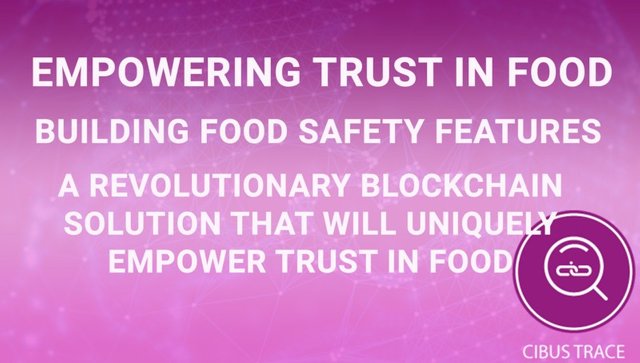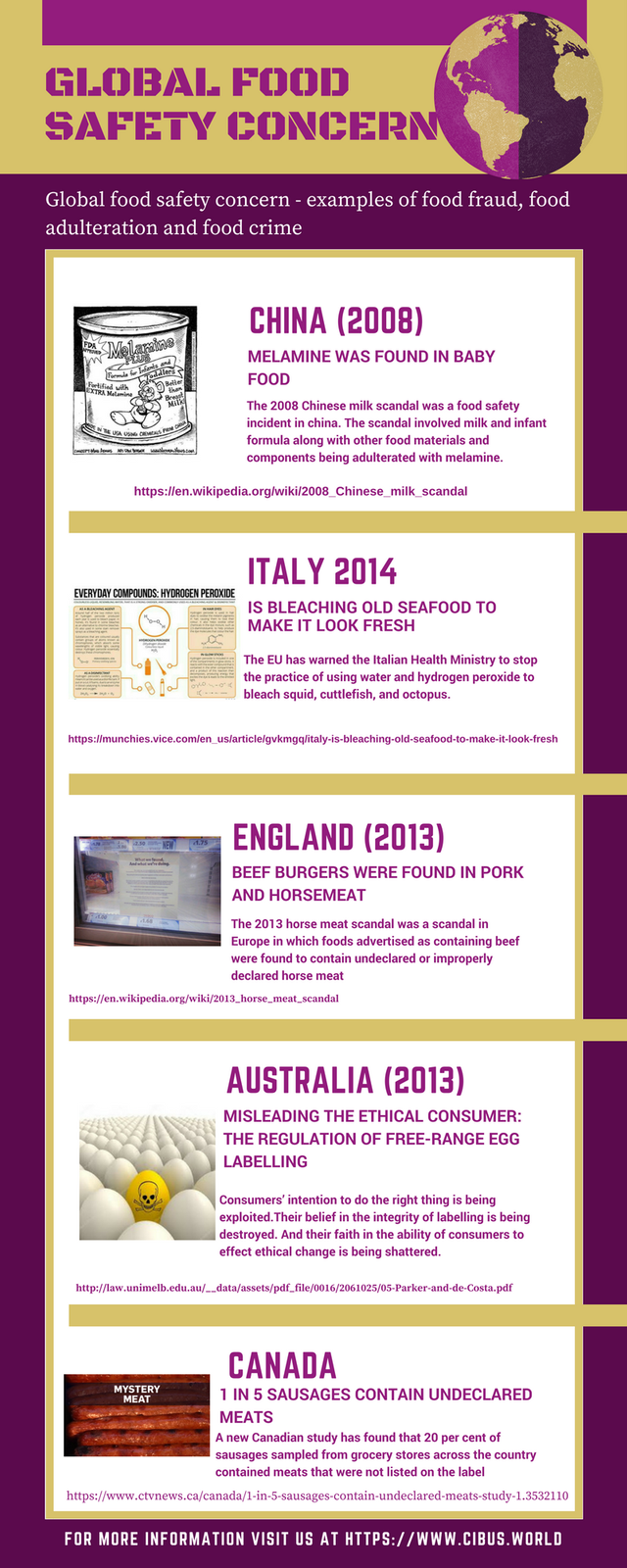Global food safety Solution by CIBUS WORLD
Examples of food fraud, food adulteration and food crime

Food safety continues to be a major issue for both consumers and manufacturers. Food safety is an organized parameter that deals in handling, preparation, as well as storage of foods in a way that can help consumers to have hygienic and health-safe foods. If food safety is a global concern, then we need to learn the hindrances of food safety: food fraud, food adulteration and food crime are three recurring issues that can hamper food safety.
What is food fraud?
Fraudulent and deliberate changeover, dilution or adding a low-quality raw material or food product, or falsification of the material or product for economic gain (by escalating its plain value or plummeting its price of production) or to create harm to average consumers (by malevolent contamination), is termed as ‘food fraud.’
One of the chief reasons that food fraud doesn’t get as much consumer-focus as it deserves is because the effects of the fraudulent mix on the human body usually go unnoticed, or the link between poor health and fraudulent–food consumption remains unclear. According to the Global Food Safety Initiative, ‘most cases of food fraud are not fatally harmful.’ However, because the health consequences are often subtle, food fraud is not always detected.
Examples:
The Top Ten most impure foods in the USA during 2013 were found were:
(1) Olive Oil, (2) Milk, (3) Honey, (4) Saffron, (5) Orange Juice, (6) Coffee, (7) Apple Juice, (8) Grape Wine, (9) Vanilla Extract, and (10) Maple Syrup. It’s a sheer fact that most food fraud cases do not typically lead to widespread outbreaks, but that does not counteract the fact that food fraud is potentially unsafe and creates a very real public-health concern.
What is food adulteration?
Food adulteration is the process in which the quality of food is lowered either by the addition of inferior quality material or by extraction of valuable ingredient. It not only includes the intentional addition or substitution of the substances but biological and chemical contamination during the period of growth, storage, processing, transport and distribution of the food products, is also responsible for the lowering or degradation of the quality of food products. Adulterants are those substances which are used for making the food products unsafe for human consumption.
Some real-life examples are:
China (2008): MELAMINE WAS FOUND IN BABY FOOD
ref :https://en.wikipedia.org/wiki/2008_Chinese_milk_scandal
Italy (2014): IS BLEACHING OLD SEAFOOD TO MAKE IT LOOK FRESH
Ref : https://munchies.vice.com/en_us/article/gvkmgq/italy-is-bleaching-old-seafood-to-make-it-look-fresh
England (2013): BEEF BURGERS WERE FOUND IN PORK AND HORSE MEAT
Ref: https://en.wikipedia.org/wiki/2013_horse_meat_scandal
AUSTRALIA (2013) : MISLEADING THE ETHICAL CONSUMER: THE REGULATION OF FREE-RANGE EGG LABELING
Ref : http://law.unimelb.edu.au/__data/assets/pdf_file/0016/2061025/05-Parker-and-de-Costa.pdf
CANADA : 1 IN 5 SAUSAGES CONTAIN UNDECLARED MEATS
A new Canadian study has found that 20% of sausages sampled from grocery stores across the country contained meats that were not listed on the label
Ref : https://www.ctvnews.ca/canada/1-in-5-sausages-contain-undeclared-meats-study-1.3532110

Food crime
Food fraud and food crime is almost synonymous but when the act of food fraud induces significant risk for public safety or there remains the chance of financial loss to consumers or food business owners including traders, distributors, retailers, the fraudulent activities are called food crime.
In 2013, in USA Olive Oil was found adulterated with peanut oil and that infested huge health crisis for olive oil consumers with peanut allergy. It happened because in some cases a fatal health-threat, which was counted as a food crime. By the time food adulteration is uncovered, the health effects-in the form of a severe allergic reaction or organ failure-has already taken place.
The Solution
Food traceability is the realistic solution to control these food abuses, which can induce considerable transparency in food supply chain. Blockchain empowered food tractability platform helps in maintaining reliance, transparency, and cost-efficiency of food businesses for consumers, which is exactly the objective of Cibus Trace introduced by Cibus World.
To know more about CIBUS world or if you have any questions, look them up in our website:
WEB: https://cibus.world/
or send a support ticket
or feel free to email us at: [email protected]
WHITEPAPER http://cibus.world/documents/
TELEGRAM https://t.me/cibus_world
TWITTER https://twitter.com/cibusworld
FACEBOOK https://facebook.com/cibus-1812771722347122/